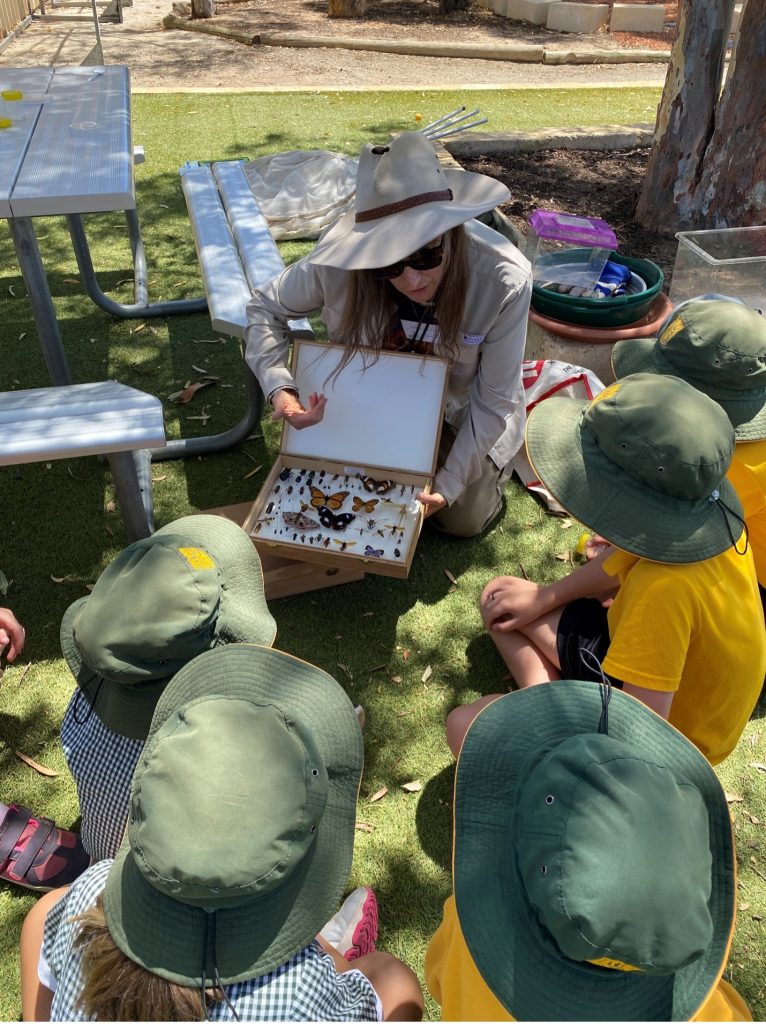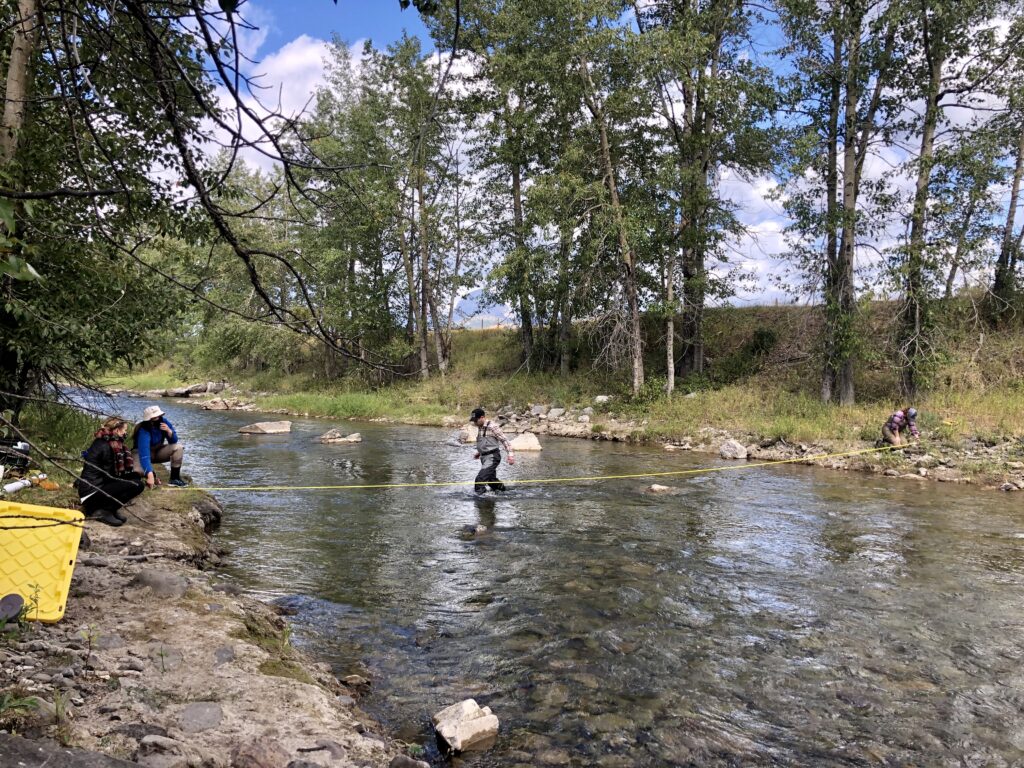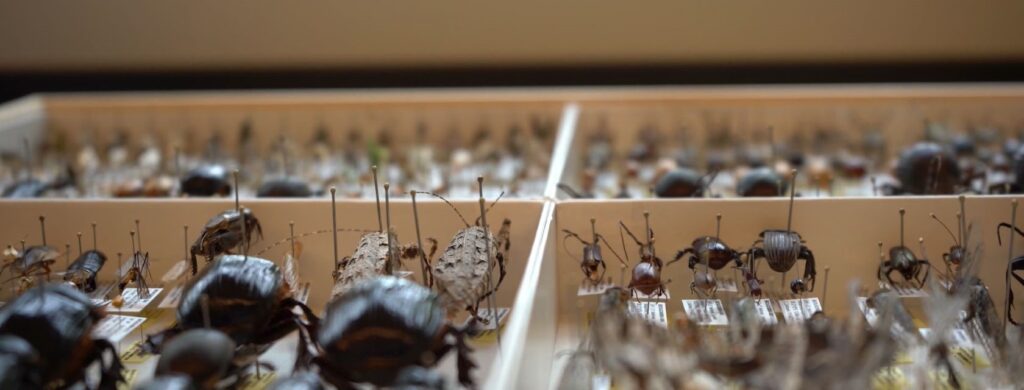Catching the citizen science bug with Insect Investigators!

School children are working with scientists to help build biodiversity data for Australia.
- CBG Media & Communications
- April 12, 2023

April is Citizen Science Month, and Aleksandra Dolezal spoke with the Centre for Biodiversity Genomics’s collaborator Dr. Erinn Fagan-Jeffries about a new citizen science project involving schools, taxonomists, and science communicators in Australia.
Fagan-Jeffries launched her project, Insect Investigators starting July 2021 to work with school children, taxonomists, and science communicators to document local insect biodiversity across 50 schools in regional areas across three states in Australia.
Using Malaise traps, school students collected insects every week for a month. The schools sent their samples to the University of Adelaide, where Erinn and her team began preparing them to send to the CBG for DNA analysis.
The Insect Investigators website states the project is about scientists and schools coming together to discover, document and describe Australian biodiversity.
What is citizen science?
Citizen science, or “community science”, involves ordinary individuals collaborating with scientists and researchers to collect data on various scientific projects. Insect data collection is one area where citizen science has gained significant traction in recent years. By engaging in simple yet impactful activities, such as observing, recording, and reporting insect sightings, citizen scientists are helping fill critical gaps in our understanding of insect populations and their distribution. Insect Investigators, for example, has been able to deploy 50 Malaise traps across participating schools across Australia. The project includes schools in very remote communities and helps the project capture as many diverse habitats as possible to capture Australia’s unique invertebrate biodiversity. These citizen scientists at schools are recording biodiversity on unprecedented temporal and spatial scales, rendering data of tremendous value to the scientific community.
In addition to contributing toward a body of scientific knowledge and benefitting researchers, participants also benefit from their participation in citizen science. Participants can learn about scientific issues through their data collection experience. Through this participation, citizen scientists learn about insect identification, behaviour, and ecological roles, enhancing their understanding and appreciation of the natural world. This increased awareness can lead to positive changes in behaviours and attitudes towards the environment, fostering a sense of environmental stewardship among participants and their communities. Citizen science projects contribute to learning, skill development, scientific understanding, science awareness and appreciation.
The What, How, and Why of Insect Investigators
What: Fagan-Jeffries describes Insect Investigators as a collaborative citizen science project that aims to involve Australian schools in documenting, discovering and describing Australia’s unique invertebrate biodiversity. The team collects invertebrates (insects, spiders and more) across Australia using Malaise traps run yearly in regional schools.
How: Fagan-Jeffries and the operational team collect invertebrates for DNA barcoding. The barcoding occurs at the CBG, and the resulting barcode data is the first step in the pipeline to “get a quick first look at the insect biodiversity, “says Fagan-Jeffries. She has also teamed with taxonomists to validate the DNA barcode data, identifying them to species level and giving them a formal scientific name.
Why: Citizen science projects like Insect Investigators allow individuals of all ages and backgrounds to get involved in real-world science efforts. “We bring school students with us through this process to educate and inspire the next generation of scientists,” says Fagan-Jeffries. The operations team helps manage the participants and ensure that all findings are disseminated to the public in an accessible and timely fashion. But there is also a school team that will ensure that the science is communicated in an exciting, engaging, and accessible way in the partnered schools. The Insect Investigators team has also developed resources to help teachers integrate the project into the classroom and curriculum.
Read more about the team.
Check out educational resources.
What have they found so far?
In May 2022, the Insect Investigators team sent 14,060 invertebrate specimens to the CBG for DNA analysis. From their collection efforts, 12,060 DNA barcodes have been added to BOLD System – a data platform developed to host barcode data from researchers and citizens worldwide. From these 12,060 specimens, we estimate 5465 different preliminary species (known as ‘OTUs’: Operational Taxonomic Units). Over half of this data (56%) of these OTUs (or preliminary species, referred to as Barcode Index Numbers, or BINs, on BOLD) are brand new records for the database. This is an excellent contribution to learning about the diversity and distribution of insects in Australia.
 A view of preliminary results from Malaise trap samples in 2022.
A view of preliminary results from Malaise trap samples in 2022.




